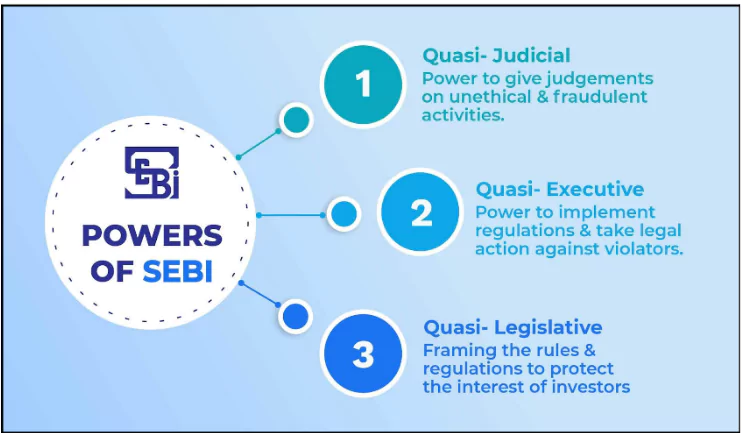Securities and Exchange Board of India (SEBI) chairperson Madhabi Puri Buch, who had been summoned by Parliament’s Public Accounts Committee (PAC) as part of its review of financial regulators, skipped its meeting.
SEBI chief is under fire over US short-seller Hindenburg Research’s report that alleged that Puri Buch and her husband Dhaval Buch owned stakes in offshore entities linked to Vinod Adani.
Enroll now for UPSC Online Course
About Public Accounts Committee(PAC)
- PAC is one of the three Financial Parliamentary committees.
- Other two are the Estimates Committee and the Committee on Public Undertakings
- Purpose: Auditing the revenue and expenditure of the Government of India.
- Main function: To ascertain whether the money granted by parliament has been spent by the government within the scope of the demand
- Origin: Introduced in 1921 after its first mention in the Government of India Act, 1919 also called Montford Reforms.
- With the coming into force of the Constitution of India on 26 January 1950, the Committee became a Parliamentary Committee under the control of the Speaker.
- Now constituted every year under the Rules of Procedure and Conduct of Business in Lok Sabha.
- Non Binding decision: Not being an executive body it can only make decisions that are advisory by nature.
- Members: Presently comprises 22 members (15 members elected by the Lok Sabha Speaker, and 7 members elected by the Rajya Sabha Chairman with a term of one year only.
- Election Method : According to the principle of proportional representation by means of a single transferable vote.
- Appointment: Chairperson is appointed by the Speaker from amongst the members of the Committee from Lok Sabha.
- The Speaker, for the first time appointed a Member of the Opposition as the Chairperson of the Committee for 1967-68.
- This practice has been continuing since then.
- A Minister is not elected as a member of the Committee.
About SEBI
- It is a Statutory body established in 1992 in accordance with the provisions of the Securities and Exchange Board of India Act, 1992.
- Origin of SEBI: Before SEBI came into existence the Controller of Capital Issues was the regulatory authority; it derived authority from the Capital Issues (Control) Act, 1947.
- In 1988 SEBI was constituted as the regulator of capital markets in India under a resolution of the Government of India as a Non statutory body .
- SEBI Act 1992 gave SEBI statutory backing
 Headquarters: Mumbai
Headquarters: Mumbai- Regional Offices : Ahmedabad, Kolkata, Chennai and Delhi.
- Role: To protect the interests of investors in securities and to promote and regulate the securities market.
- Composition: SEBI consisting of the following (9-member Board):
- 1 Chairman: Chairman is appointed for a maximum period of five years or till 65 years, whichever is earlier.
- Process of Appointment of SEBI chairperson : Appointed based on the recommendation of the Financial Sector Regulatory Appointments Search Committee (FSRASC)
- 2 members from the Ministry of Finance and Ministry of Corporate Affairs (MCA)
- 1 member from the officials of Reserve Bank of India (RBI)
- 5 other members of whom at least 3 shall be Whole-Time Members (WTM)
About Securities Appellate Tribunal (SAT)
- It is a statutory body Created under the provisions of the Securities and Exchange Board of India (SEBI) Act, 1992.
- Mandate: Body that hears appeals and resolves issues based on the orders passed by the SEBI.
- No appeal can be made to the SAT against any order made with the consent of the parties.
- Jurisdiction: To hear appeals on cases concerning the whole of India.
- Powers of hearing Appeals on Following Orders:
- Orders of the Insurance Regulatory and Development Authority of India (IRDAI) in relation to cases filed before it;
- Orders of Pension Fund Regulatory and Development Authority (PFRDA) in relation to cases filed before it;
- Orders passed by the Securities and Exchange Board of India.
Check Out UPSC CSE Books From PW Store
- Appeal against the orders of the SAT can be made in the Supreme Court.
- An appeal can only be made on any question of law.
- Members of Tribunal : Presiding officers, judicial members, and technical members.
- Appointment: Presiding Officer and Judicial Members shall be appointed by the Central Government in consultation with the Chief Justice of India or its nominee.
- Tenure: Five years from the date of appointment.
- Eligible for re-appointment for another term of maximum five years.
- No presiding officer or member shall hold office after he/she has attained the age of 70.
![]() 25 Oct 2024
25 Oct 2024

 Headquarters: Mumbai
Headquarters: Mumbai